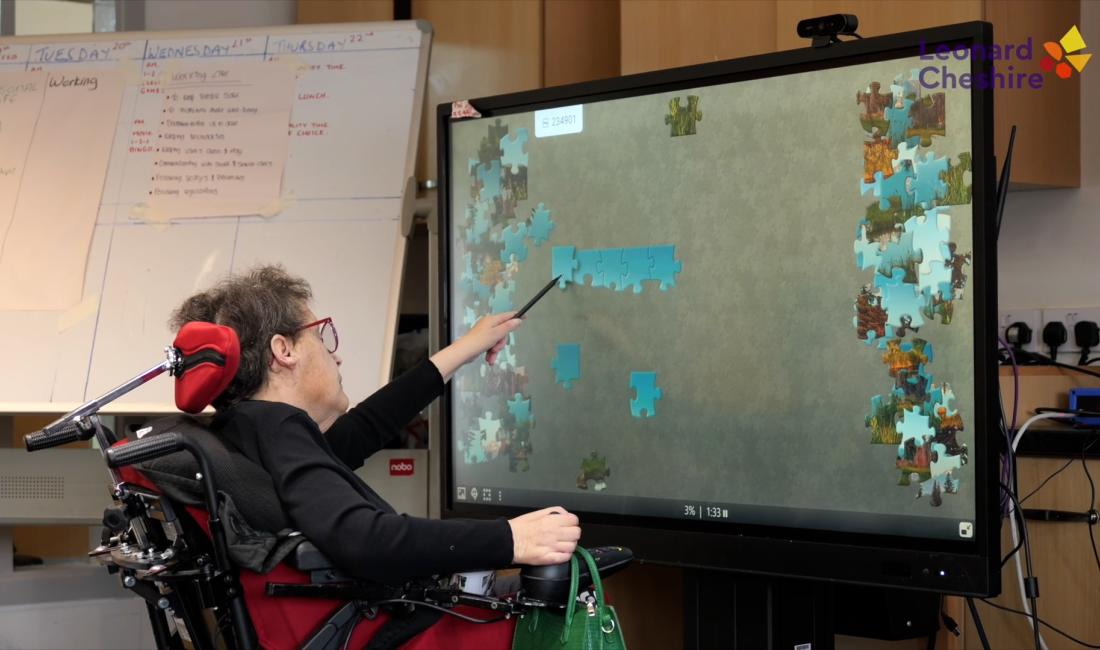What is Assistive Technology?
Assistive technology is technology used by individuals with disabilities in order to perform functions that might otherwise be difficult or impossible.
Examples of Assistive Technology
Augmentative and Alternative Communication aids (AAC)
These communication aids will help our residents who struggle with verbal communication to have more expressive communication and choice making opportunities. Individuals will have communication aids adapted to their needs so they are safe and accessible. Full training is provided for residents and care staff so eventually, the use of these tools will be second nature.
Computer access methods
In order to use AAC devices and other technology, we provide a range of standard and specialised computer access methods and mounting solutions. These will include:
- Standard touch screen devices.
- Adaptive mouses such as rollerball or joystick.
- Switches activated by touch or muscle movement. These help the user to start to scroll down and across the screen. This helps them select the appropriate letter, word or command.
- Eyegaze technology. This uses a small camera on the computer screen to detect and select, letters, words or commands just by gazing at them. For people with very limited movement or mobility, this can be life changing!
- Voice control. Voice control helps residents with restricted mobility to control their environments by speaking to them. They will be able to open and close doors, windows and window blinds. They will also be able to change TV channels, play music, alter lighting controls and even initiate video calls to family and friends.
We use a range of commercially available voice activated technology. Some of this you’d probably find in your own home like Google Assistant and Alexa. We also use the accessibility options standard in Windows, IOS and on Smart TV’s.
Predictive healthcare analytics
We’ll be using a range of sensors and wearable devices to help establish normal patterns of health and movement for our residents. This monitoring will help flag up early changes, such as high temperatures, before they become emergencies.
Accessible activities
Activities to help with social inclusion. This will include:
- Virtual audio book clubs. Residents listen to the book of their choice on a simple to use audio device. They then join a facilitated monthly book club with friends from other Leonard Cheshire homes. The club takes place via video conference, allowing residents to get together socially to chat about the book
- Clevertouch interactive PC. A 55 inch touch screen PC with a range of interactive games and video conferencing facilities. The Clevertouch unit also comes with Apple TV, giving access to great content for communal film nights.
- Virtual Reality Headsets, enabling residents to not only experience games, but also virtual tours of world famous sites. This also helps familiarise residents with more local areas where they can pre-plan and prepare for social visits. This can help to overcome any anxieties or confidence issues with Autism or Access concerns.
- Electronic and interactive voting systems to help make choices around food menus, décor, social activities, etc.
- Interactive and accessible notice boards and signage around the home
Our Assistive Technology work
We're bringing life changing technology to the people we support in our care settings and empowering staff to support this comfortably.
